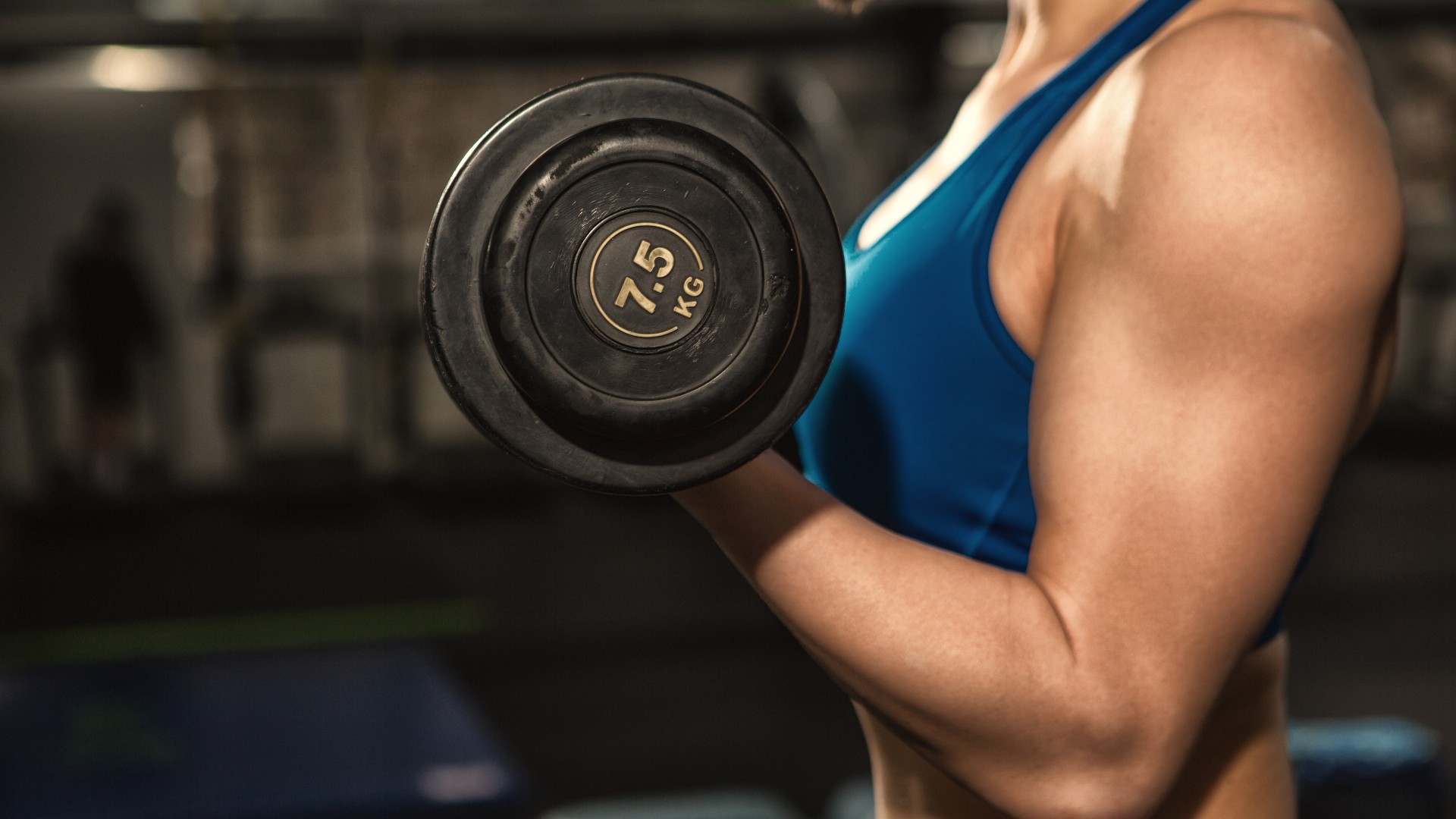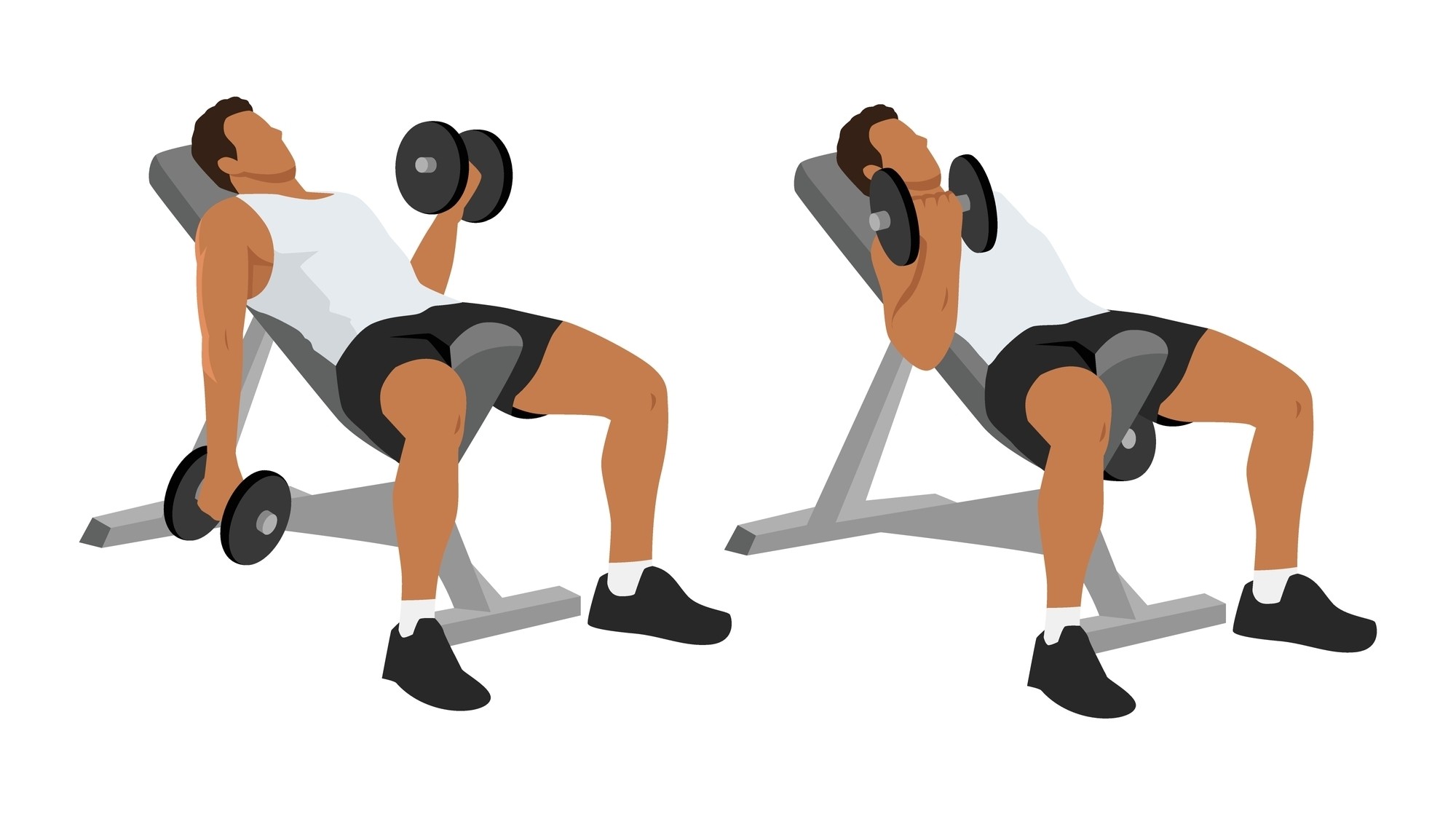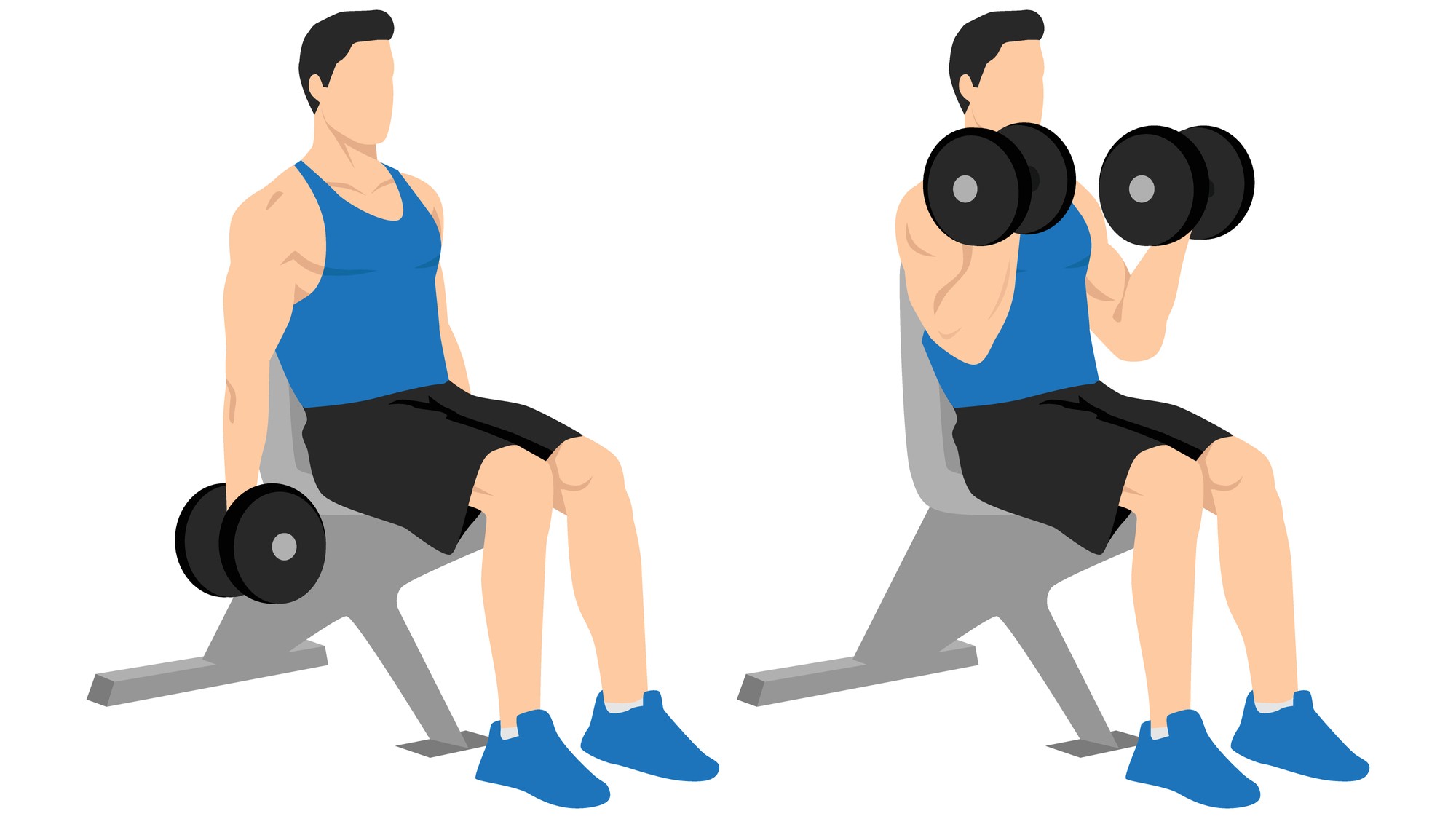
Just like the Arnold press variation of the overhead press for shoulders, Zottman curls are the bicep curl variation we all need. It takes the upper and lower arms, including the three bicep muscles and forearms, using flexion, extension and a simple rotational hand movement.
To do the Zottman curl, perform a bicep curl, then turn your palms outwards at the top of the curl and lower the weights again to change the emphasis on your arms. If you’re looking to add one biceps exercise to your arm workouts, make it this one. You’ll just need a set of dumbbells — we recommend the best adjustable dumbbells — to do the move.
Below, we cover how to do Zottman curls with proper form and some common mistakes we’ve seen people make when doing them. We also reveal the benefits of Zottman curls and why the arm exercise is so effective at strengthening your biceps, wrists and forearms.
Zottman curls: Benefits
The bicep curl variation is a solid addition to any dumbbell arm workout for strengthening your biceps, wrists and forearms and features on some of the best upper body strength programs.
Any exercise that requires you to hold weights will activate your forearms and develop hand and grip strength, and your forearms support upper limb movement and complex arm, wrist and finger movements. Strong forearms could help you lift heavier and hold weights for longer.
Grip strength declines as you age, so regularly training these muscle groups will ultimately improve upper-body strength and help you hold on for longer. And because your biceps assist with pulling exercises like deadlifts, bentover barbell rows, pull-ups, or dead hangs, you’ll want to strengthen them to maximize your ability during weight lifting.
Zottman curls target all three biceps muscles — the biceps brachii during the concentric phase (lifting) and the brachioradialis and brachialis during the eccentric phase, giving your biceps a serious workout with just a set of dumbbells and creativity. But it’s not just in the gym that your arms matter. Arm strength translates to simply daily tasks like carrying groceries or moving furniture.
Sign up to get the BEST of Tom's Guide direct to your inbox.
Get instant access to breaking news, the hottest reviews, great deals and helpful tips.
How to do Zottman curls
Here’s how to do this curl variation properly.
How:
- Stand with your feet shoulder-width apart, holding both dumbbells
- Hold both dumbbells by your sides with palms facing up and arms extended
- Set your shoulders back and down and engage your core. Your spine should be neutral
- Perform a bicep curl by bending your elbows and drawing the weights toward your shoulders. Squeeze your biceps at the top
- Pause, then rotate your palms forward facing and slowly lower both dumbbells toward your sides
- Pause, then turn palms to face up and repeat.
Zottman curls: Common mistakes
These are the most common mistakes we see.
Flaring elbows
To keep the focus on your biceps and take pressure off your joints, keep your elbows locked in towards your sides and track the dumbbells directly toward your shoulders without traveling wide and away from the body; this is especially true when your palms face forward during the lowering phase.
Swinging your arms
You might see fellow gym-goers swinging their arms in a bid to pump iron — resist the urge to follow suit. Not only does this signal ego lifting, but it doesn’t actually achieve anything. To feel this exercise properly move with control, lifting and lowering for several counts with a soft pause at the top of the curl. The swinger arms have no place here.
Hunching shoulders
Before starting your reps, pull your shoulder blades away from your ears and set them down; this should help improve posture and prevent hunching.
Arching the back
Under heavier loads, many people push their hips forward and arch the spine to help them lift the weight. Instead, practice keeping a tall spine (we recommend clients perform the curl against a wall at first) and squeeze your abdominal muscles to engage your core.
Lifting too heavy
You can get a huge amount of feedback from your biceps without lifting heavy weights. These are smaller muscles than your glutes or lats and they fatigue quickly with isolation exercises. If your form is compromised, you’re lifting too heavy. Only lift a weight that allows you to maintain proper technique, and drop by 1-2kg if necessary.
Zottman curls: Variations

Preacher curls

Incline Zottman curls

Seated curls
Alternating Zottman curls
If you’d like to work unilaterally, try alternating Zottman curls, which train both sides of your body to work independently. Doing so could strengthen your underdeveloped, weaker muscles and improve coordination, balance and mind-muscle connection.
Time under tension curls
You could also practice time under tension, which means slowing the exercise down. We like using a 4-1-4-1 tempo, which means raising the weight for 4 seconds, pausing, lowering the weight for 4 seconds, then pausing at the bottom.
Preacher Zottman curls
The preacher bench isolates the arm and prevents the body from using any momentum to lift the weight. Here, you can focus on maximizing the activation of your biceps and isolate the movement, but you’ll have a little bit less range of motion to play with.
Incline Zottman curls
Using a workout bench, stack your seat height to lean back slightly. From this supported position, you can maximize your range of motion and squeeze the juice out of the muscles.
Seated Zottman curls
Sit with your back against a workout bench stacked vertically. The variation prevents using any swinging momentum to lift the weights and could help you engage your core.
Aim for 3-4 sets of 8-12 reps per arm, then gradually increase weight over time.
More from Tom's Guide

Sam Hopes is a level 3 qualified trainer, level 2 reiki practitioner and senior fitness writer at Tom's Guide. She is also currently undertaking her Yoga For Athletes training course. Sam has written for various fitness brands and websites over the years and has experience across brands at Future such as Live Science, Fit&Well, Coach, and T3.
Having worked with fitness studios like F45 and Virgin Active, Sam now primarily teaches outdoor bootcamps, bodyweight, calisthenics and kettlebells. She also coaches mobility and stretching-focused classes several times a week and believes that true strength comes from a holistic approach to training your body.
Sam has completed two mixed doubles Hyrox competitions in London and the Netherlands and finished her first doubles attempt in 1:11.

